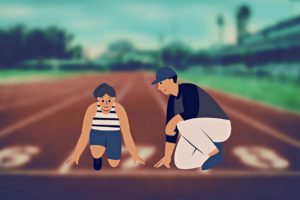Are you looking for a fun and engaging activity to do with your child on a rainy day? Look no further than sensory bins! Sensory play is a fantastic way for children to explore and learn about the world around them through tactile exploration.
By providing a variety of materials and textures, children can develop their fine motor skills, language, and cognitive abilities.
Rainy day sensory bins are a perfect way to bring the excitement of the outdoors inside. With a few simple materials and a little creativity, you can create a sensory bin that will keep your child entertained for hours.
In this article, we will explore the benefits of sensory play, the materials needed for a rainy day sensory bin, and some fun activities to try.
So grab some supplies and get ready for some hands-on play!
Key Takeaways
- Sensory play is beneficial for children’s cognitive, emotional, and social development, and can be tailored to fit any sensory bin theme.
- Rainy day sensory bins are a perfect way to bring the excitement of the outdoors inside, and can be themed or used for various activities.
- Materials used for sensory play should be age-appropriate and safe, and supervision is necessary to ensure the child’s safety.
- Materials used for sensory play can be easily cleaned and stored for future play.
Benefits of Sensory Play for Children
You’ll be amazed at how beneficial sensory play can be for your child’s development. Sensory play isn’t just about having fun; it’s also crucial for your child’s developmental growth.
As children explore different textures, smells, and sounds through their senses, they’re building new neural pathways in their brain that can help with cognitive, emotional, and social development.
The importance of sensory play cannot be stressed enough. It helps children improve their fine motor skills, hand-eye coordination, and encourages problem-solving skills.
Sensory play also promotes language development, as children learn to describe the different sensations they’re experiencing. Additionally, it can help with emotional regulation, as children learn to process and express their feelings through sensory experiences.
Overall, sensory play is a great way for children to learn and grow while having fun at the same time.
Materials for Rainy Day Sensory Bins
There are plenty of materials available to create an exciting sensory experience for your child on a rainy day. Here are some materials you can use for your sensory bins:
Rice or pasta: These can be dyed with food coloring to create a rainbow of colors for a fun and colorful experience.
You can also hide small objects in the rice or pasta for your child to find, like small toys or beads.
Water beads: These small, gel-like beads can expand when soaked in water and create a unique sensory experience for your child.
You can also add in small toys or plastic animals for your child to play with and explore.
Raincoat activities and indoor play ideas can also be incorporated into your sensory bins. For example, you can add in raincoat or umbrella-themed toys to your sensory bins to create a rainy day theme. You can also encourage your child to use their raincoat or umbrella while playing with the sensory bins to add an extra layer of fun and exploration.
With these materials and ideas, your child can have a fun and engaging sensory experience on a rainy day.
Setting Up a Rainy Day Sensory Bin
Once you’ve gathered your materials, it’s time to get creative and set up a bin that will engage your child’s senses and spark their imagination.
Start by choosing a container that’s large enough for your child to play in but not so large that it takes up too much space. You can use a plastic storage container, a shallow cardboard box, or even a baby bathtub.
Next, add your materials to the bin. Fill it with a few inches of water and add in some food coloring to make it more visually appealing. Then, toss in some objects that your child can explore with their hands, such as sponges, water beads, or textured balls. You can also add in some toys, like plastic animals or boats, for your child to play with.
With this indoor play, your child will get the tactile stimulation they need for sensory development.
Sensory Bin Activities
Get ready to engage your child’s senses with fun and creative activities using materials like water beads, textured balls, and plastic toys in a sensory bin. These activities are perfect for texture exploration and can be tailored to fit any sensory bin themes you have in mind.
Here are some ideas to get started:
Ocean Adventure: Fill the bin with blue water beads, plastic sea animals, and shells. Let your child use a net to catch the animals and explore the different textures of the beads and shells.
Construction Site: Use kinetic sand as the base and add in plastic construction vehicles, rocks, and small shovels. Encourage your child to use their hands to build and create in the sand.
Farm Fun: Fill the bin with dried corn kernels, plastic farm animals, and hay. Let your child use their fingers to scoop and pour the kernels while exploring the different textures of the hay and animals.
Sensory Scavenger Hunt: Hide small objects in the bin, such as pom poms, plastic coins, and toy cars. Encourage your child to search for the hidden items using their sense of touch and explore the different textures of the objects.
With these sensory bin activities, your child will have a blast exploring different textures while developing their fine motor skills and creativity.
Cleaning and Storing Sensory Bins
You’ll want to keep your sensory bin materials clean and organized by following these simple tips.
First, consider using washable materials like plastic containers and toys that can be easily sanitized. Avoid using materials that may trap moisture or bacteria, such as fabrics or wood.
When it comes to cleaning your sensory bins, start by removing any large debris or leftover materials. Then, wash the containers and toys with warm soapy water and rinse thoroughly. If you want to sanitize the materials, consider using a mixture of water and vinegar or a disinfectant spray.
Once everything is clean and dry, store your sensory bin materials in a labeled container or bin to keep them organized and easily accessible for future play. Consider using clear containers to easily see the contents inside.
With these cleaning tips and storage ideas, your sensory bins will be ready for hands-on play anytime!
Safety Considerations
Now, it’s important to keep in mind some safety considerations to make sure that your child has a fun and safe experience with their sensory bin.
First and foremost, you should consider whether to use the sensory bin indoors or outdoors. If you’re using it indoors, make sure the area is clear of any hazards and that your child is supervised at all times. If you’re using it outdoors, choose a shaded area to avoid sunburns and make sure there are no harmful insects or plants in the vicinity.
Another important safety consideration is age appropriateness. Always make sure the sensory bin materials are appropriate for your child’s age and developmental stage. For example, small objects can be a choking hazard for young children, so it’s best to avoid using them.
Additionally, be sure to monitor your child’s play to ensure they’re not putting any of the sensory materials in their mouth or eyes.
With these safety considerations in mind, your child can have a fun and safe sensory play experience with their rainy day sensory bin.
Frequently Asked Questions
Can sensory play help improve a child’s academic performance?
Sensory play has numerous benefits for children, including its impact on cognitive development and academic performance. By engaging in sensory activities, children are able to explore the world around them and develop their senses, which can improve their ability to process information and learn new concepts.
Additionally, sensory play can help children develop important skills such as problem-solving, critical thinking, and creativity, all of which are essential for academic success.
Overall, incorporating sensory play into a child’s daily routine can have a positive impact on their academic performance and overall development.
Are there any specific materials to avoid using in sensory bins?
When it comes to creating sensory bins for children, it’s important to be mindful of the materials you use.
Avoid using toxic materials or small objects that could pose a choking hazard. Instead, opt for safe materials such as rice, beans, or sand.
Before introducing any new materials, be sure to conduct research and make sure they are safe for children to use.
Additionally, it’s crucial to properly clean and sanitize sensory bins after each use to prevent the spread of germs and bacteria. Use a mild soap and warm water to clean plastic bins and allow them to air dry completely before storing.
By following these tips, you can create a safe and enjoyable sensory play experience for children.
How often should sensory bins be changed or refreshed?
When it comes to sensory bins, you should aim to change or refresh them on a regular basis. There’s no set frequency that applies to all situations, as it will depend on various factors such as the materials used, the age of the children using them, and how frequently they’re used.
However, as a general rule, you should aim to refresh or change them at least once a week. This’ll help prevent the build-up of bacteria and other harmful microorganisms that can have long-term effects on your children’s health.
Additionally, regularly refreshing the materials in your sensory bins can help keep children engaged and interested in the activity. This can lead to greater learning and development opportunities.
Can sensory play be beneficial for children with sensory processing disorders?
If your child has a sensory processing disorder, sensory play can be extremely beneficial for them. Understanding sensory processing is the key to helping your child cope with their disorder.
Sensory integration therapy is a type of therapy that uses sensory play to help children with sensory processing disorders. By providing different textures, temperatures, and sensory experiences, it can help your child regulate their sensory input and improve their overall sensory processing abilities.
The benefits of sensory integration therapy are numerous, including improved behavior, socialization, and communication skills. So, if your child has a sensory processing disorder, sensory play can be a great way to help them improve their sensory processing skills and overall quality of life.
What are some common mistakes to avoid when setting up a sensory bin?
When setting up a sensory bin, it’s important to keep in mind proper materials, organization, and cleanliness.
One common mistake is using materials that are not safe for children to touch or ingest. Another mistake is not properly organizing the materials in the bin, which can lead to frustration and chaos during playtime.
Additionally, it’s important to keep the sensory bin clean and sanitized to prevent the spread of germs. To avoid these errors, make sure to use safe and appropriate materials, organize the bin in a way that is easy for children to navigate, and regularly clean and sanitize the materials.
By creating engaging sensory activities with these considerations in mind, children can have fun while also developing their sensory skills.
Conclusion
Great job! You’ve successfully learned about the benefits of sensory play for children and the materials needed to create rainy day sensory bins.
You’ve also learned how to set up and engage in sensory bin activities, as well as how to properly clean and store sensory bins.
Remember to always prioritize safety when engaging in sensory play with children.
With these tips and tricks, you can provide hands-on, tactile exploration for children on rainy days. Sensory play isn’t just fun but also promotes cognitive, emotional, and physical development in children.
So, go ahead and get creative with your sensory bins and watch your child’s imagination and learning soar!

















